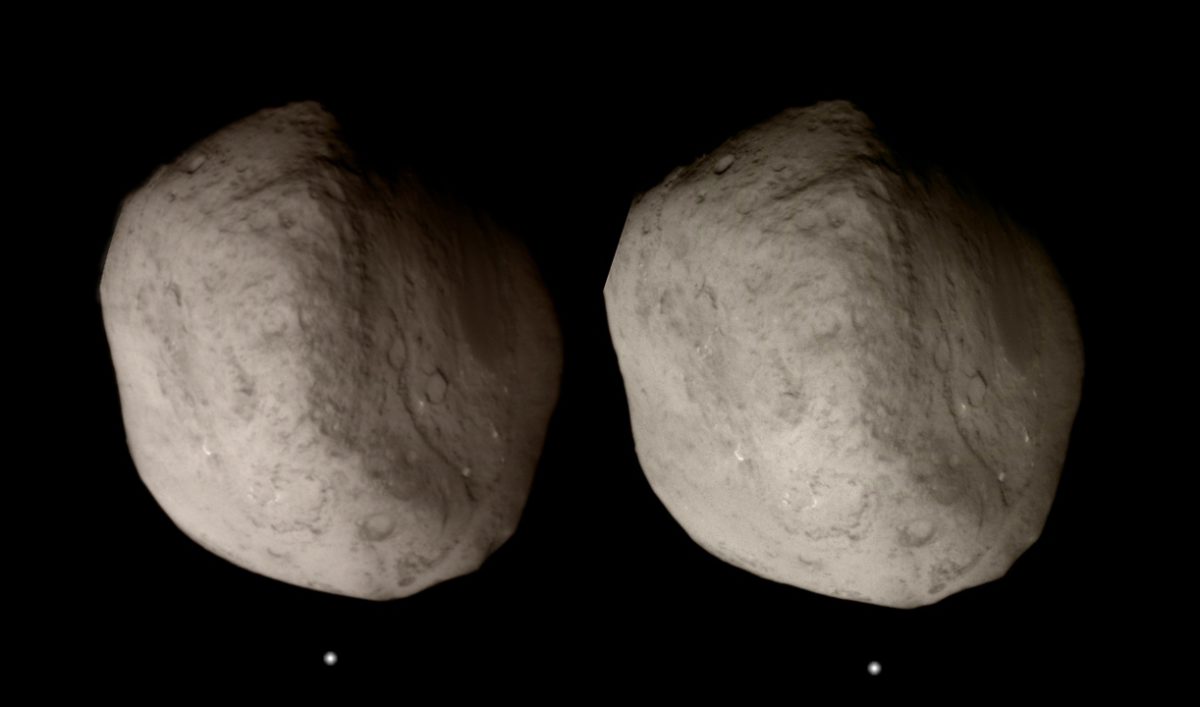Emily Lakdawalla • Feb 15, 2011
Highlights from today's Stardust Tempel 1 press briefing
It was a very happy science team at this afternoon's press briefing following the Stardust encounter with Tempel 1. I'll just post some brief notes now; they haven't posted the graphics from the briefing online yet so I can't illustrate and comment at length, but I wanted to post something now rather than later because family obligations will keep me from doing any more work today. In lieu of other illustrations I'll post this cool crossed-eye stereo view of the comet, produced by Daniel Macháček:

Also, check out my animation of images from the flyby, which I've updated to include 39 frames.
So here are some highlights:
From project manager Tim Larson: The spacecraft operated perfectly and took all desired data. The team has confirmed following the flyby that despite getting several noticeable dust hits, there was no noticeable degradation to the health of the spacecraft as a result of the encounter. They still do not know why the images came down in the order they were taken rather than with the five closest-approach shots coming first as planned, but the data are all there and it should all be on the ground soon. At the time of the briefing, 60 of the 72 science images were on the ground.
From principal investigator Joe Ververka: "Was this mission 100% successful in terms of science? No. It was 1000% successful!" He pointed out clear evidence for erosion along the scarp bounding the smooth flow-like feature visible in both Deep Impact and Stardust views. He also mentioned that they predicted the longitude of the comet that would be facing the spacecraft to within 1 or 2 degrees, "a great achievement."
From co-investigator Peter Schultz: " I make craters for a living but I've never had to wait five and a half years to see the results." The Deep Impact crater is clearly visible. It is 150 meters across, with a central mound. The surface of the comet that we hit is weak and fragile. The crater was more subdued than some of us expected, but it was the size we expected.
Co-investigator Don Brownlee played a cool recording of sound generated from data from the CIDA dust analyzer instrument, a spattering of particles hitting the spacecraft through the encounter.
Let’s Go Beyond The Horizon
Every success in space exploration is the result of the community of space enthusiasts, like you, who believe it is important. You can help usher in the next great era of space exploration with your gift today.
Donate Today

 Explore Worlds
Explore Worlds Find Life
Find Life Defend Earth
Defend Earth

